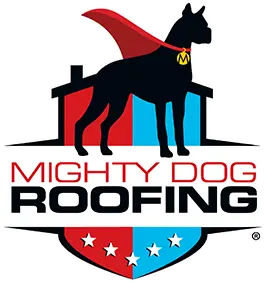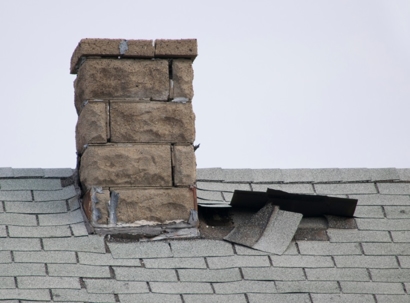Roof repair can seem daunting and a task that many homeowners dread.
Yet, it's an essential part of home maintenance. Ignoring minor issues can lead to major problems.
This guide aims to demystify the process. It provides practical roof repair tips that every homeowner should know.
Armed with this knowledge, you can extend the lifespan of your roof and prevent costly repairs in the future.
So, let's dive in and explore these essential roof repair tips. Your home, and your wallet, will thank you.
Understanding the Basics of Roof Repair
A basic understanding of roof repair can go a long way. It equips homeowners to handle small repairs themselves.
Learning about different roofing materials is essential. Asphalt shingles, metal, and tile each have unique properties and repair methods.
Weather impacts roof health significantly. Harsh conditions like storms can speed up wear and tear.
Routine roof checks can prevent minor issues from becoming major. Early detection is key to successful repairs.
Here's a breakdown of fundamental roof repair components:
- Inspection: Regular checks to identify any emerging issues.
- Maintenance: Keeping gutters clean and addressing small fixes promptly.
- Material Knowledge: Understanding the specific needs of your roofing material.
- Weather Awareness: Knowing how climate affects your roof's durability.
- Professional Help: Recognizing when to call a roofing contractor.
Preparing for Roof Repair: Safety and Tools
Safety is paramount when undertaking roof repairs. Accidents can occur if precautions are not taken seriously.
You need proper gear to ensure safety. Appropriate tools make the repair process smoother and more efficient.
Before starting any repair, ensure you have the right equipment. This will save time and help avoid injury.
Create a checklist of essential items. This list should include both safety gear and essential tools.
Here's a quick safety and tool checklist for roof repair:
- Safety Gear: Gloves, helmet, non-slip shoes, safety harness.
- Basic Tools: Hammer, nails, utility knife, measuring tape.
- Specialized Tools: Roofing shovel, sealant gun, caulking tool.
- Other Essentials: Ladder stabilizer, tool belt, bucket.
Each item plays a key role in a safe and effective repair job. Proper preparation minimizes risks and potential delays.
Step-by-Step Roof Inspection Checklist
Regular inspections are crucial for maintaining a healthy roof. They help identify potential issues before they escalate.
Begin by inspecting the roof from the ground. Use binoculars to spot any noticeable damage or missing shingles.
Climb onto the roof for a closer inspection. Make sure you're equipped with the appropriate safety gear.
Check all roof components thoroughly. Pay attention to the flashing around chimneys and vents.
Create a checklist to streamline the process.
Here's a suggested roof inspection checklist:
- Visual Check: Look for missing or damaged shingles.
- Flashing: Examine around chimneys, vents, and valleys.
- Gutters and Downspouts: Ensure they're securely attached and free of debris.
- Roof Surface: Check for moss, algae, or other growth.
- Interior Inspection: Look at ceilings for water stains or signs of leakage.
- Attic Check: Assess insulation and ventilation conditions.
Regularly inspecting your roof can prevent costly repairs. Address issues promptly when they are identified.
How to Conduct a Thorough Roof Inspection
To perform a detailed roof inspection, plan your approach. Start with the exterior and work your way inward.
Begin with a visual ground inspection. Use binoculars to spot problems without climbing. Look for large branches or heavy debris.
Next, carefully climb the ladder to access the roof. Follow all safety protocols and ensure ladder stability.
On the roof, examine each shingle for damage. Look for cracks, curls, or missing granules as these are signs of wear.
Pay special attention to the flashing. Check these areas for gaps or deterioration which can lead to leaks.
Don’t forget to inspect the attic. Look for sunlight penetration or damp insulation, which indicates potential roofing issues.
Identifying Common Roofing Issues
Identifying issues early can save homeowners from extensive damage. Some problems are more common than others.
Look for missing, cracked, or curling shingles. They expose the roof to weather damage and potential leaks.
Issues with flashing are frequent culprits of leaks. Improperly sealed or damaged flashing can lead to water infiltration.
Moss and algae growth suggest trapped moisture. They can cause shingles to break down over time.
Blockages in gutters and downspouts are a red flag. They lead to water overflow and possible damage to the fascia and soffits.
Inspect the attic for signs of water damage. Water stains, mildew, or damp insulation indicate possible leaks above.
Addressing these issues promptly avoids costly repairs. Keep an eye out for these signs during your inspection.
Fixing Roof Leaks: A Homeowner's Guide
Addressing roof leaks promptly is vital to prevent further damage. Delays can lead to more extensive and costly repairs.
Leaks are often caused by damaged shingles or faulty flashing. Identifying the source is the first step in fixing the problem.
During rainy weather, trace water stains on your ceiling. This can often lead you directly to the problem area on the roof.
Here's a step-by-step process to fix typical roof leaks:
- Locate the Leak: Search for water stains and inspect the roof above the issue.
- Mark the Area: Once you find the leak, mark it for reference.
- Prepare the Roof: Clean the area thoroughly to ensure proper patch adhesion.
- Select Appropriate Materials: Choose materials that match your existing roof for seamless repairs.
- Apply the Patch: Use roofing cement or adhesive to secure the patch in place.
- Seal and Secure: Ensure all edges are sealed to prevent future leaks.
Taking immediate action helps avoid bigger issues. Keep tools and materials handy for quick repairs as needed.
Preventative Measures to Extend Roof Life
A proactive approach to roof maintenance can significantly extend its lifespan. Regular care prevents minor issues from developing into costly repairs.
Inspect your roof regularly for damage or wear. Look for signs like missing shingles or leaks.
Simple maintenance tasks can make a big difference. Clean your gutters, remove debris, and ensure proper ventilation.
Preventative measures protect against common problems that may compromise your roof's integrity over time.
Seasonal Maintenance Tips
Each season brings challenges that can affect your roof. Adapting maintenance tasks to seasonal needs is key.
In spring, conduct a thorough inspection after winter storms. Look for damage from ice or snow.
Summer offers the chance to repair and reinforce. Address any vulnerabilities before harsher weather returns.
In fall, clear leaves and debris. Ensure gutters are free-flowing to handle winter precipitation.
Inspect and reinforce the attic during winter. Check for insulation issues that could cause condensation problems.
Seal any small leaks found in summer when conditions are safe for rooftop access. Early detection prevents further damage.
These routine actions help you stay on top of roof health year-round, guarding against seasonal threats.
Protecting Your Roof from Extreme Weather
Extreme weather can cause severe roof damage. Being prepared lessens the impact and aids in quick recovery.
Before a storm, secure any loose shingles or flashing. Strengthening these areas can prevent water ingress during heavy rain.
If your area is prone to severe weather, invest in storm-resistant materials. These materials resist damage and prolong roof life.
Ensure gutters and downspouts are free of blockages. This facilitates efficient water runoff, protecting your roof's edges.
Tie-down heavy objects like satellite dishes. Reducing wind resistance helps avoid unnecessary strain on the roof.
Consider adding protective coatings. They provide an extra layer of defense against elements like snow and hail.
Preparedness minimizes damage and downtime, keeping your home safe during extreme weather events.
Addressing Emergency Roof Repairs
Emergencies can happen when you least expect them. It's crucial to act quickly when your roof is damaged.
Swift action prevents minor damages from becoming extensive problems. Timely fixes keep your home safe from leaks.
Assess the damage safely, preferably from the ground. Prioritize areas vulnerable to water entry.
Temporary solutions should stabilize the situation until professional help arrives. It's essential to limit exposure to the elements.
Having an emergency repair plan can be invaluable during these times. It minimizes stress and potential damage to your home.
Quick Fixes for Sudden Roof Damage
Unpredictable events may lead to sudden roof damage. Quick fixes are essential to prevent worsening conditions.
Tarps are effective for covering large areas until repairs can be made. Secure them with sturdy fasteners.
For small leaks, use waterproof sealant or roofing tape. These solutions stop water ingress temporarily.
Patch small cracks or holes with metal flashing. This prevents water from spreading to vulnerable areas.
Buckets or containers can catch leaking water indoors, protecting your flooring and belongings.
Keep an eye on patched areas and examine them regularly. Make sure they're holding up under changing conditions.
Quick fixes serve as a crucial stopgap, ensuring your home stays protected until full repairs can be executed.
The Role of Professional Roof Inspections
Regular professional roof inspections are crucial for maintaining your home's integrity. They provide expert assessments beyond what homeowners typically observe.
Professionals can identify hidden issues, preventing costly repairs down the line. They spot things that untrained eyes might miss, such as subtle shingle deterioration or minor flashing problems.
Conducting these inspections at least once a year keeps your roof in optimal condition. They ensure minor issues get resolved before they escalate into more significant problems.
Moreover, professional evaluations can enhance your home's safety. Roofing experts assess vulnerabilities that could pose risks to your household.
These inspections are also beneficial when severe weather is common. They prepare your roof for the demands of changing seasons.
Trusting experts for these checks ensures thoroughness and effectiveness. This diligence provides peace of mind, knowing your roof is professionally evaluated and maintained.
Maintaining Roof Health
Maintaining your roof's health is pivotal to safeguarding your home's overall structure. Consistent care prevents damage and supports longevity, reinforcing your investment in the property.
Awareness is crucial; knowing when to act is key. Regular checks, timely repairs, and professional expertise should be integral to your maintenance routine.
For expert residential roof repair services in Fort Myers, contact our roofing company, Mighty Dog Roofing. Our contractors are here to assist with all of your residential roofing needs!


